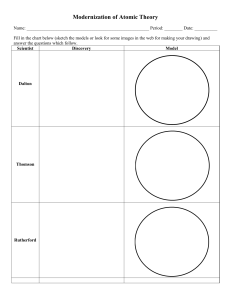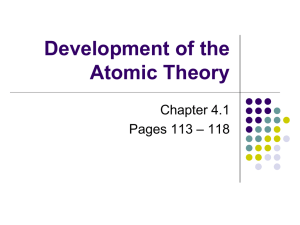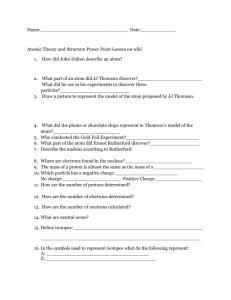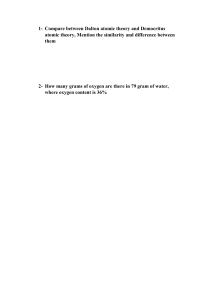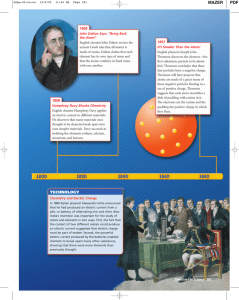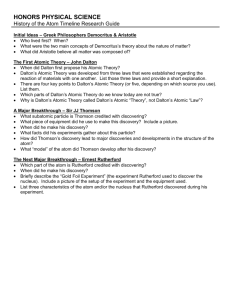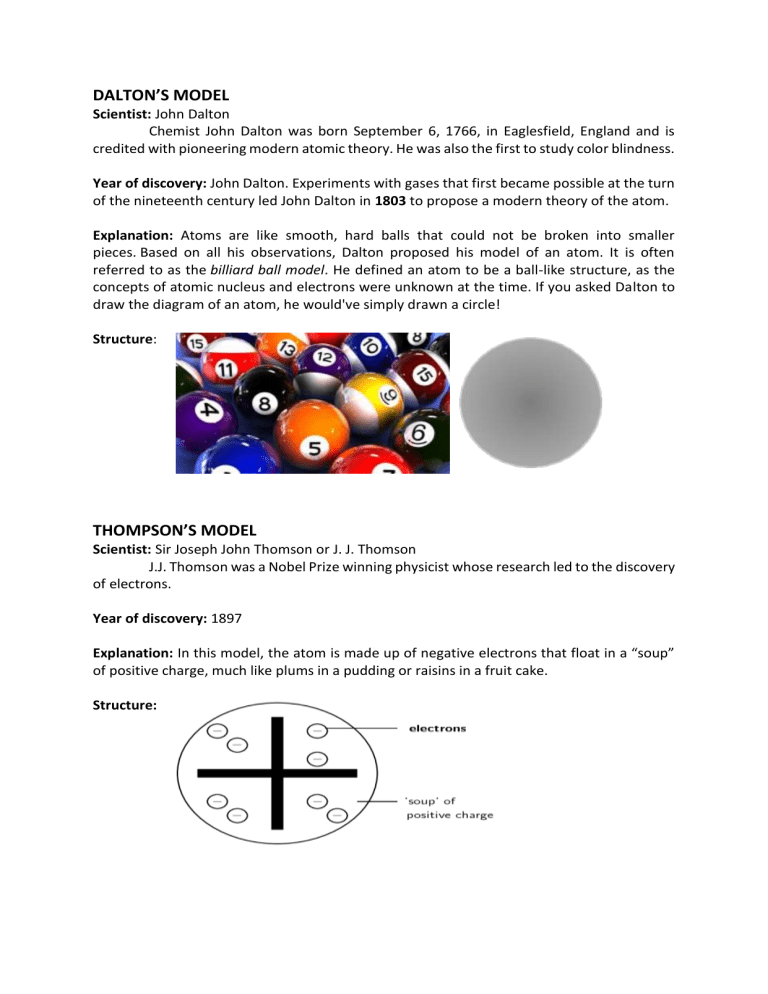
DALTON’S MODEL Scientist: John Dalton Chemist John Dalton was born September 6, 1766, in Eaglesfield, England and is credited with pioneering modern atomic theory. He was also the first to study color blindness. Year of discovery: John Dalton. Experiments with gases that first became possible at the turn of the nineteenth century led John Dalton in 1803 to propose a modern theory of the atom. Explanation: Atoms are like smooth, hard balls that could not be broken into smaller pieces. Based on all his observations, Dalton proposed his model of an atom. It is often referred to as the billiard ball model. He defined an atom to be a ball-like structure, as the concepts of atomic nucleus and electrons were unknown at the time. If you asked Dalton to draw the diagram of an atom, he would've simply drawn a circle! Structure: THOMPSON’S MODEL Scientist: Sir Joseph John Thomson or J. J. Thomson J.J. Thomson was a Nobel Prize winning physicist whose research led to the discovery of electrons. Year of discovery: 1897 Explanation: In this model, the atom is made up of negative electrons that float in a “soup” of positive charge, much like plums in a pudding or raisins in a fruit cake. Structure:
